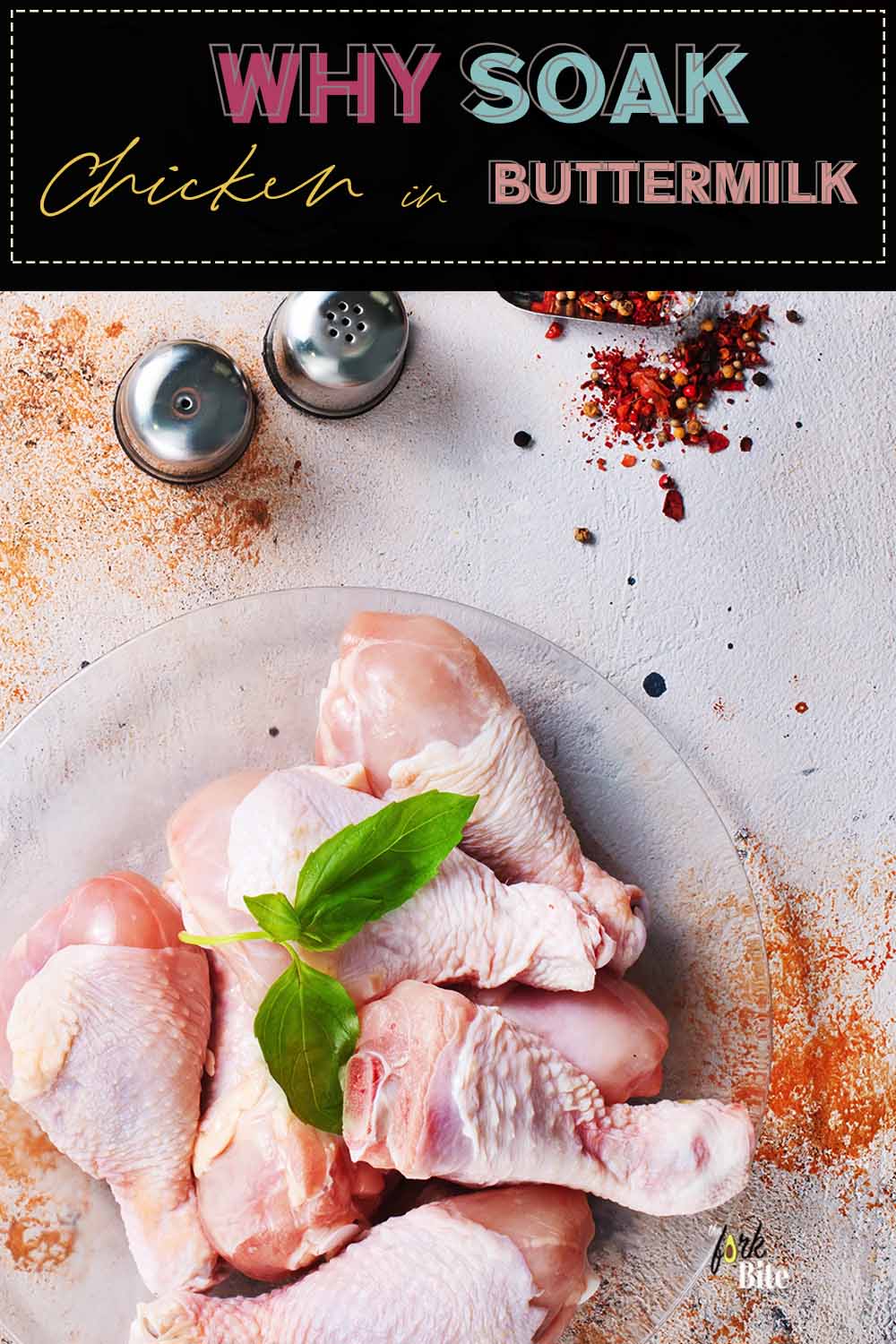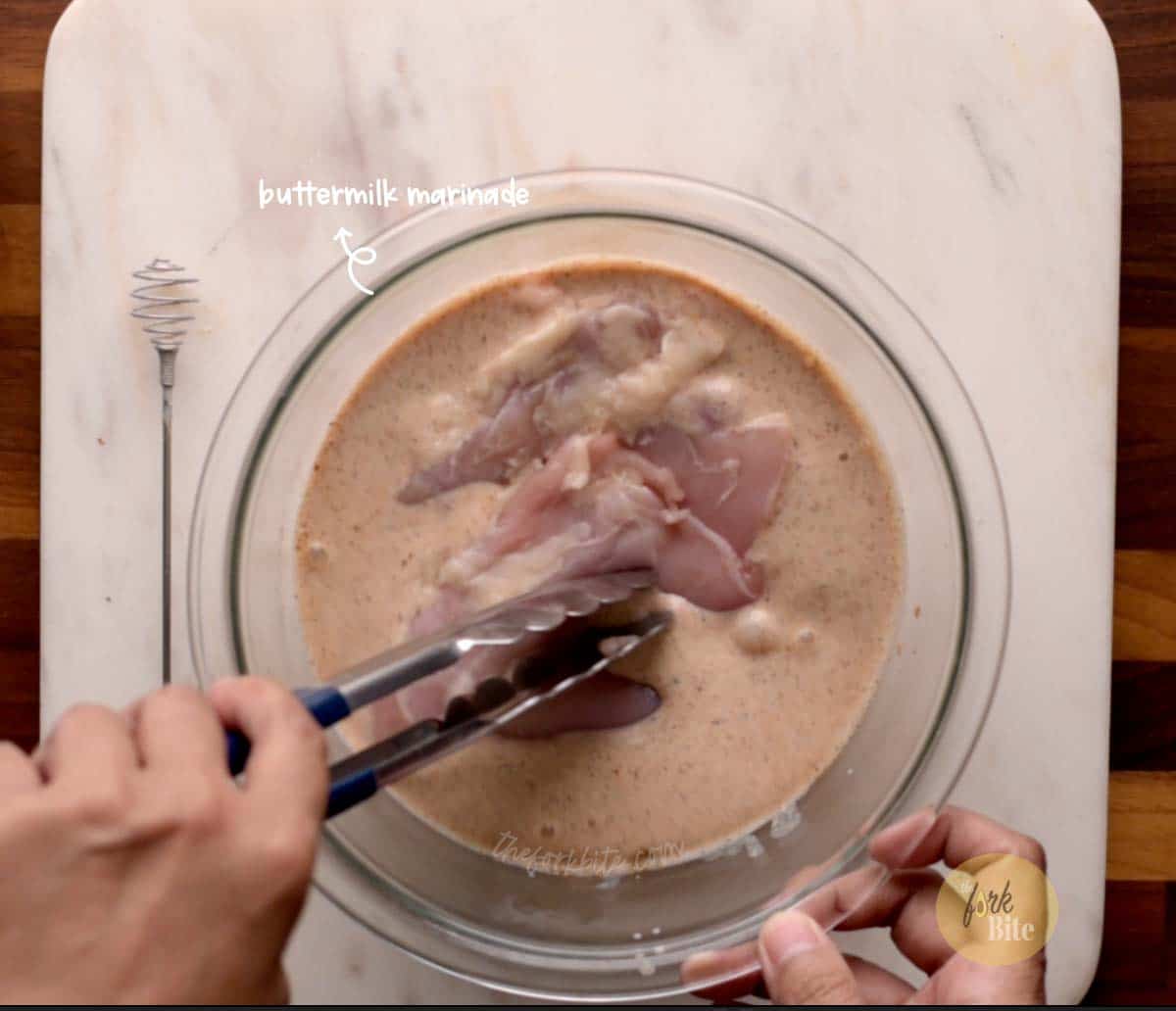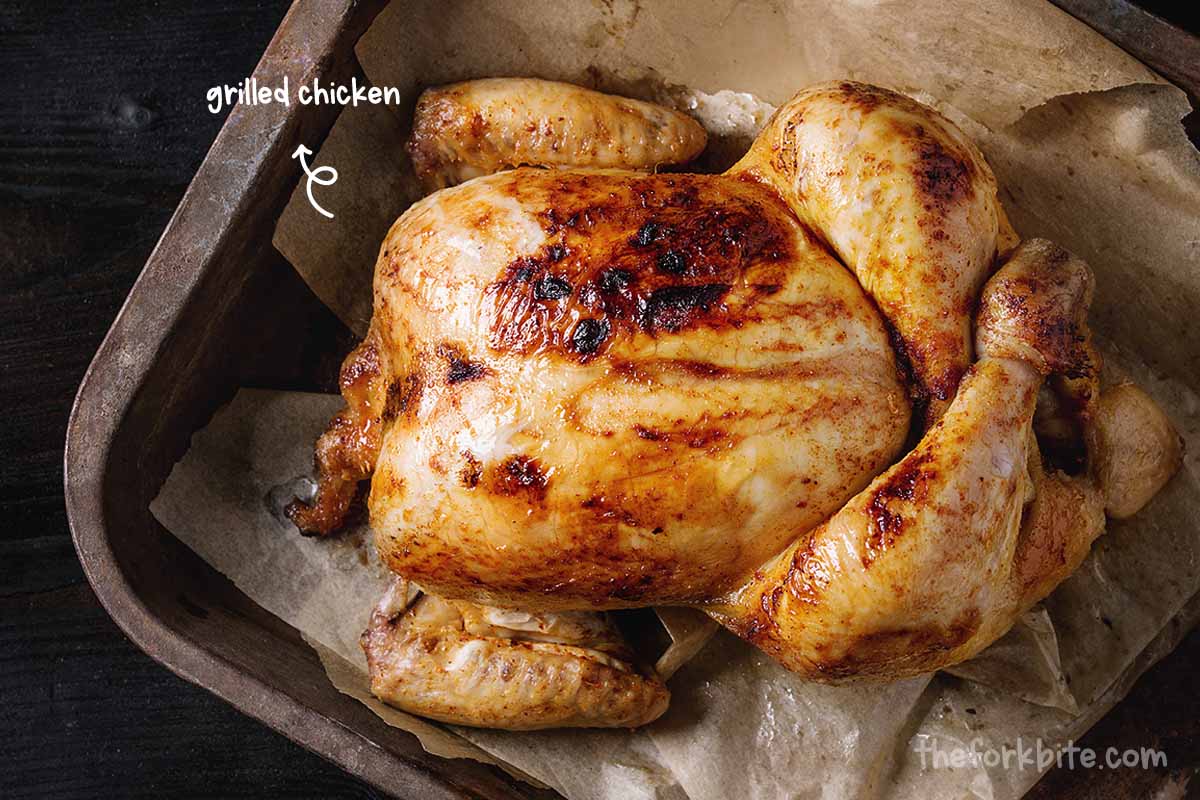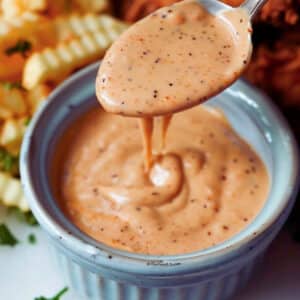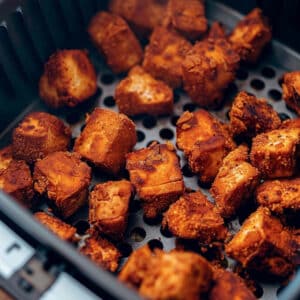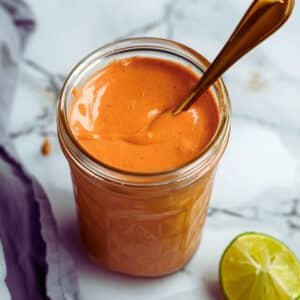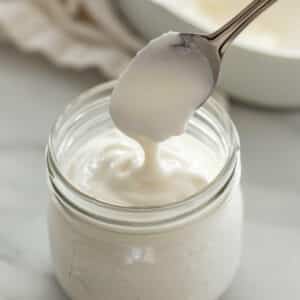Okay, so marinating meat or poultry tenderizes it, but why soak the chicken in milk? It's not acid - or is it? Strictly speaking, milk is not acid, but it does contain lactic acid, and it is this that will react with chicken to tenderize it.
Jump to:
Why on earth would you want to soak the chicken in milk? Perhaps, like Cleopatra, the fabled queen of Ancient Egypt, who, it is said, used to bathe in ass's milk, it will give your chicken youthful skin.
But, do you care how your chicken looks? No, there has to be another reason, and indeed there is. Curious? Read on, and we shall reveal all.
Why soak chicken in milk?
To make it more tender and delicious, of course. Most of us love eating chicken. It is one of the healthiest proteins there is. We roast it, fry it, stew it, casserole it, stir fry it, poach it; you name a style of cooking and bet your bottom dollar that someone, somewhere, prepares our beloved fowl in that way.
When cooked well, chicken is soft, moist, and tasty. But sometimes, for one reason or another, it comes out dry, chewy, and flavorless, which is what soaking chicken in milk is supposed to remedy.
But is it true? Does soaking meat in milk tenderize it? Let's find out.
Some facts about meat and poultry
The muscle tissue of any animal or bird is kept intact by a network of protein known as collagen. It is fibrous, tough, but pliable. When you cook meat or poultry, the heat breaks down the collagen. A marinade does the same thing.
Marinades usually contain some form of acid. The ones most commonly used are derived from lemon or lime juice, wine, or vinegar. When you mix them with oil and some sort of seasoning, you create a marinade.
Pour it on meat or poultry and let it rest for a while. The acid in the marinade will work on the collagen molecules, thus tenderizing the meat.
How does soaking in milk work?
To get a better understanding of the chemistry at work here, we refer to a recent interview with Ted Russin, Dean of the Culinary Institute of America's food science program, as referred to in an article on the Popular-Science.com website.
Russin, who trained as a chemist, regards meat as a gel. As he puts it, "A wad of water within a protein matrix." He gave an example of yogurt and buttermilk - both milk derivatives - which contain lactic acid that breaks down protein walls.
As the marinading process continues, the meat or poultry gets more acidic, which enables it to absorb more moisture. It's rather like a dry sponge. Soak it in water, and it becomes soft.
While this is happening, the lactic acid in the dairy products accelerates the chemical interactions. It facilitates the enzymes being able to break the proteins down from the inside, working outwards. The collagen, too, is broken down. As collagen is what gives meat its firm structure, when it breaks down, it results in a softening of the flesh.
Russin went on to observe that lactic acid doesn't seep deeply into larger cuts of meat. For better penetration, the acid needs to be injected, or vacuum tumbled. However, it works excellently with thinner cuts.
So, with things like chicken, small chunks of beef or lamb, pork steaks, ground beef, etc. marinading with a healthy dollop of buttermilk, heavy cream or yogurt works very well. You can use a similar technique with other mixes too.
-
- Using these marinades accelerates the protein collagen breakdown and speeds up the tenderizing of the meat. Milk Is also a brilliant tenderizing and soaking agent as it works in two ways with chicken.
- The lactic acid destabilizes the protein, and the calcium accelerates the natural breakdown process. It provides the answer to why to soak the chicken in milk.
How long can you marinate the chicken?
The length of time you should marinate chicken depends on the type of marinade you are going to use.
Using the probiotic type of marinades
If you use a probiotic marinade such as buttermilk or yogurt, it is best to allow the chicken to be marinated overnight. The good bacteria that you need to tenderize the meat work quite slowly. The action is quite a delicate one.
Using acid marinades
Acidic marinades are quite different. The acid works much faster and with higher intensity. If you've created a marinade containing say cider vinegar and extra virgin olive oil, for example, you will only have to leave it for a couple of hours to work its magic.
-
- If you leave it beyond that time, the chicken will only toughen up. It's a bit like boiling an egg. Anything beyond four minutes and your once, soft, runny egg, will become hard-boiled.
- The most frequently used marinades are acidic. They contain things like lemon juice, vinegar, and various herbs and seasonings. Marinades containing acid are great for making things like lemon-balsamic marinated chicken breasts.
For breaded, deep-fried chicken
If you are going to do something like breaded, deep-fried chicken, you will be better off using the probiotic marinating action.
-
- Soak the chicken overnight in probiotic buttermilk or yogurt, or a combination of both, plus some other flavorings.
- Next day, pat dry with a paper towel, coat with egg-wash, dip in breadcrumbs and deep fry in sizzling oil until they are a lovely, golden brown.
Some chefs prefer a belt and braces approach. They use a mixture of acids and probiotics to make their marinades. This type of marinade only needs to marinate for two hours. The result is a beautiful, tender, slightly tangy tasting chicken.
How long can chicken sit in milk?
So, there you have it. When marinating chicken, give it two hours for acid marinating (or a combo of acid and probiotic), and for a probiotic only marinade, leave it overnight.

Can you soak pork chops in milk?
The answer to the question of what happens when you marinate the pork in milk is - good things happen! Yes, you can marinate the pork in milk with great success.
In fact, dairy products are often preferred to other sorts of marinades because they produce superior results.
If that sounds strange to you, consider it a one-step variation from marinating chicken in buttermilk before frying. It works on the same principle, but the ingredients change slightly.
Milk substitutes
Using yogurt to marinate chicken can be a good substitute. Yogurt marinade is a traditional Middle Eastern and Indian cooking practice that stretches back over centuries. Asian chefs marinate not only chicken, but also lamb and pork in yogurt, blended with coriander, cumin, garam masala, garlic, ginger, and turmeric.
This technique is prevalent throughout the Indian sub-continent and is responsible for such well-known dishes such as tandoori chicken and lamb.
One American comfort food, fried chicken, has a fermented dairy product as one of its key ingredients. Before coating in breadcrumbs and frying, the chicken is marinated overnight in buttermilk, plus special poultry seasonings. This ensures that the chicken will be succulent on the inside while having a lovely crispy coating.
4 Ways to tenderize chicken
When it's cooked properly, chicken is capable of turning a boring meal into a delicious feast. But, to ensure that the chicken cooks evenly, it is best to tenderize the meat before cooking. This will thin the chicken meat out, preparing it for stovetop cooking.
Method #1: Using a special meat tenderizing tool
You can buy special meat tenderizing tools. They usually come in the form of wooden or metal mallets that have spiked heads with which to pound the meat, making it more tender.
They can be purchased from most kitchen supply stores. You can go down the DIY route and use an ordinary, clean hammer instead, although, because it has a smooth head rather than a spiky one, it won't be as effective as a shop-bought meat tenderizing tool.
How to use it:
-
- Pound the meat. Chicken breasts and thighs should have the bones removed before being beaten with your meat tenderizing tool. If you leave the bones in, when you hit the meat, the bones will shatter, making them impossible to eat when cooked. Deboning chicken breasts and thighs is simple when you know how to go about it.
- Use it on boneless cuts of chicken. Once the bones have been removed, cover the chicken meat with plastic wrap. This stops small pieces of chicken spattering over the worktop when you hammer it.
- Cover the meat with a piece of cling wrap. When you pound the chicken meat, make sure it is even all over. Carry on beating until the meat is as thin as the recipe demands. Beating the meat in this way breaks down its fibers so that it will cook quickly. Pounding is an excellent method to use just before cooking, as it is so quick.
Method #2: Using marinades
How to do it:
#1.) Using Dairy marinades
When using dairy products to tenderize your chicken, buttermilk, milk, and yogurt are all good. They each have lactic acid and enzymes.
They work together on the meat proteins causing them to break down and tenderize. It's a favorite method of many cooks and chefs.
They tenderize the chicken meat overnight, which will result in succulent, tender chicken when cooked the next day.
This way of marinating chicken is great for any cooking process, including barbecuing, deep-frying, and cooking in the oven.
Extra Tips:
-
- If you're going to use yogurt as your marinade, it's best to use plain. Flavored yogurts like vanilla, may not give you the result you expected.
- Having warned you to stick with plain yogurt, some people use lemon, lime, and coconut flavored yogurt, which can produce great results for Asian-style recipes.
- You can use either full or low-fat yogurts. Both work equally well. The cooked meat will taste yogurt slightly, but it works well and complements peppers and other spices.
- Buttermilk has a much milder flavor than yogurt and therefore does not taint the natural taste of the chicken.
- If you can't get buttermilk, you can make your own.
Just add one tablespoon of white vinegar into a cup and top up with milk - whole or low fat - it doesn't matter unless you're on a weight loss diet. - Let it stand for 5 to 10 minutes. Once it has curdled, you can then use it as an alternative to shop-bought buttermilk.
#2 Marinating time matters
As mentioned previously, when using a dairy or probiotic marinade, letting it stand overnight is preferable.
However, marinating chicken in buttermilk or yogurt for only an hour or so can significantly differentiate the texture of the cooked chicken. You can check this Popeye buttermilk chicken copycat recipe, as I used buttermilk for the brine.
-
- The process of marinating is simple. Place the chicken meat in a container and cover with buttermilk or plain yogurt. Fit the container lid and refrigerate until you need it.
- If you wish to add seasoning by way of spices and salt, please feel free to do so. Once you finished marinating, before cooking, shake off any excess marinade.
#3.) Getting creative with your marinades
Each time you use a different marinade, the results will be slightly different. Marinade recipes number in their thousands, but you need to remember that some are more tender than others.
-
- Heavily acidic marinades. You do need to be careful. Marinades that have more acid content, such as vinegar and lemon juice, can toughen the meat. Although they impart great flavor, you will probably have to bash the chicken well with your meat tenderizing tool to soften the texture.
This is how many people treat their meat when making a curry. Depending on the strength of flavor of the curry you are preparing, you may or may not be able to detect a hint of the lemon or vinegar.
-
-
- Creating mushy chicken. If you want to create a mushy chicken with your marinade, it is best to use enzyme-based marinades with pineapple or meat tenderizer. Just be a little careful because the chicken may become overly soft. However, if this is your aim, no worries.
- Use fruit enzymes in your marinade. Just be a little careful as to which fruit you use. Some people put kiwifruit, pineapple, and mango, or a mixture of all of them into their marinades, add it to the meat and leave it in the refrigerator for approximately one hour.
Due to the enzymes in these fruits, the chicken will be decidedly mushy.
- Many people enjoy using soda in their marinades. They work well. Because they have high acidic properties, they break down chicken quickly and add great flavor. If you want to try this for yourself, using the soda of your choice, cover the chicken with it, and add a teaspoon of salt. If there's not quite enough liquid, you can top up with water. Sodas that work well in marinades include Coca-Cola, Pepsi, Sprite, Sierra Mist, Mountain Dew, and 7 Up. Experiment and enjoy.
-
Method #3 - Cooking the chicken
1.) Choose your cooking method.
There are several ways you can cook chicken, and here are a few for your consideration.
-
-
- Blackened chicken. Add one tablespoon of olive oil to a pan and heat. Season the chicken with whatever spice or spices you wish to try. Fry the chicken in the oil. When it is no longer pink inside, it is cooked and ready to eat.
- Oven-baked chicken. Grease a baking tray, season your chicken, and place inside the pan. Bake for 30 to 40 minutes in a hot oven until any pinkness has disappeared.
- Grilled chicken. Take your tenderized and seasoned chicken and cook under a hot grill until it is ready to eat.
- Stewed chicken. A well-stewed chicken is rarely tough. It's one of the many reasons the chicken stews and casseroles are found in the world's recipes. They can be made using marinated or marinated chicken. The choice is yours.
-
#2. Avoid overcooked chicken.
Overcooking chicken results in disaster. The proteins will tighten up into a sort of bubblegum type consistency, and the meat will be horribly dry.
The best way to make sure that your chicken is cooked, but not overcooked, is to use a meat thermometer. If you do use a thermometer, the internal temperature you are looking for is 165 °F (74 °C).
If you don't have a meat thermometer, you might like to know that some cooks prick the chicken with a fork, and when the juices run clear, it is ready to eat.
#3.) Using the low, slow method
Slow cooking has the advantage that it will enable the juices to penetrate throughout the meat giving you a juicier, tastier bird. You can use this method for bone-in thighs, as well as roasting a whole chicken.
-
- Don't worry, appropriately done, the low, slow method will not overcook your chicken. Cooking chicken slowly breaks down the proteins and allows for more tender meat.
#4.) Allow the meat to rest after cooking
Resting the chicken after it has cooked will allow the juices to spread throughout the meat. Cover the chicken with heavy-duty aluminum foil and let it rest for between five and 10 minutes.
If you carve it immediately after cooking, the juices will drain out instead of reabsorbed it back into the meat. Resting is essential for any roast chicken, be it a whole bird, or jointed bird.
Providing you haven't overcooked your chicken, carving it immediately, and not letting it rest will not be a total disaster. The chicken should still be tasty, though not as juicy as it would be had it rested.
Allowing a chicken to cool a little is no bad thing. Handling it or cutting into it straightaway can carry the risk of you burning yourself. If eaten too quickly, you could also burn your mouth.
Method #4 - How to buy and cook the most tender chicken
1.) Know your source.
Unless you are a professional, it is not always easy to judge the quality of the chicken by merely looking at it. We would, therefore, recommend that you buy it from a trusted source.
Just be careful as local store brands may not be as good a bet as nationwide brand names. Locally farmed organic poultry may not always provide the most tender option.
However, if the chicken was bought at a farmer's market, the butcher may be willing to point out the best buy.
2.) An old chicken is a tough chicken
The older a chicken gets, the tougher it becomes. Here in the US, chickens sold for human consumption are processed only a few weeks old, to make sure that the flesh is nice and tender.
Stewing birds can be older, so those found on hobby farms or kept in people's backyards might find their way into stews and still be acceptably tender due to the stewing process.
#3.) Various cuts of chicken offer different textures.
The darker meat of chickens - that found in the legs and wings has more fat in it. This makes it more moist and tender.
White meat, like that, typically found in the breast, tends to be drier and a little tougher. But when marinated in buttermilk or another meat tenderizer, it can still be deliciously tender.

